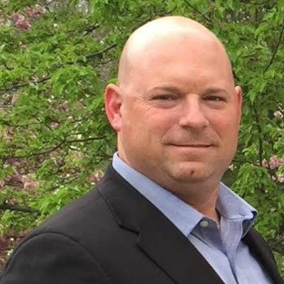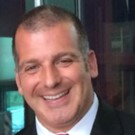Every year on the first day of class, one of the authors of this piece would ask his social studies students what they considered the most dangerous thing in the classroom. They were always surprised to hear his answer: their textbook. He wanted his students to think critically about the single perspective that the commercial textbook showed—and which it didn’t. He also wanted them to think about how that one textbook too often controlled what they learned and didn’t learn.

This teacher wanted to illuminate multiple perspectives for his students—but as administrators know, adopting a stack of different materials for a single class can prove difficult, given budget constraints and adoption cycles.
Enter open educational resources, or OER. OER are educational materials—from single lessons to entire textbooks—that are free for educators and students to use, customize, and share. They’re openly licensed, rather than carrying a traditional copyright, which makes it easy to personalize them and incorporate content that’s fresh and relevant to students. You can get started by visiting oerproject.com.
Some administrators will point out that implementing OER requires increased curriculum planning upfront, as well as a shift in educators’ mindsets toward instructional materials. However, once teachers are on board, the reward is significant.
For example, Garnet Valley School District in Pennsylvania, where two of the authors have been administrators, digitized its entire curriculum by embedding OER creation and curation into its Understanding by Design curriculum planning. Garnet Valley is a high-performing district, but it was steadily losing students to virtual charter schools. One of the ways it addressed this issue was by modernizing its curriculum and educational practices.

Garnet Valley administrators wanted to avoid just using OER for the sake of digital materials, so they were intentional about using OER to boost student understanding and overall material quality. They started the curriculum writing process by vetting the effectiveness of all of the materials in use in the district. For the materials that weren’t as strong, teachers worked together to find or create OER replacements.
This was the first time many of the district’s educators had collaborated with colleagues from other buildings and departments. They were able to share best practices and support each other as they developed and tried out new resources. In real time, they were able to see the benefits of OER and some of the biggest OER skeptics became the biggest OER advocates.
Because teachers were able to design their curricula themselves, it gave them a sense of ownership and allowed them to support whatever formats they needed – in-person, virtual, or hybrid. This was a major advantage as schools transitioned to remote learning during the COVID-19 pandemic – educators knew where to go to find the resources they needed to quickly adjust.

Some may want to challenge the benefits OER offers educators and students, but it’s clear to us that the pros heavily outweigh the cons. Some may say that the time teachers spend incorporating OER into the curriculum would cost too much. At Sewanhaka Central School District, over 80% of surveyed teachers said they never used their textbooks, so the district was spending resources on materials that weren’t helpful. The district was able to allocate the many thousands of dollars saved by switching to OER to stipends for teachers on curriculum writing committees.
We’ve seen great success with OER curriculum at Garnet Valley and Sewanhaka Central and are working on supporting other districts as they incorporate OER as well. We know that if other districts can leverage OER, they can reap a lot of the same benefits we’ve seen for teachers and students.
Samuel Mormando is the Director of Technology, Innovation, and Online Learning for the Garnet Valley School District in Glen Mills, PA. Before joining Garnet Valley, Mormando was an award-winning Classrooms for the Future teacher and instructional coach for the William Penn School District.
Brian Messinger is the District Coordinator of Classroom Instructional Technology and Student Achievement for Sewanhaka Central High School District in Floral Park, NY. Before he was appointed to his current role, Messinger served the Sewanhaka Central High School District as a social studies teacher at H. Frank Carey High School, chairperson of the school social studies department, and district coordinator of social studies.
Anthony Gabriele is the Assistant to the Superintendent for Teaching and Learning at Centennial School District in Warminster, PA. Before joining Centennial School District, Gabriele served as Supervisor for Learning, Development, and Professional Growth at Garnet Valley School District in Glen Mills, PA.
More from DA



